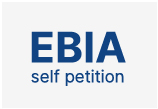This website uses cookies so that we can provide you with the best user experience possible. Cookie information is stored in your browser and performs functions such as recognising you when you return to our website and helping our team to understand which sections of the website you find most interesting and useful.
EB1A Reference letters
Reference letters are letters that you obtain in support of your self-petition application process. While EB1A and NIW letters are similar, they differ in the content and how the letters are worded to explain your achievements that meet the USCIS requirements.
- Two types: You would obtain some from researchers who have collaborated with you (collaborators) and some from those who are aware of your work or have used your work as part of their research (independent reviews).
- Referees: You should choose referees who are widely know and/or very well accomplished in their work. Credentials of referees such as number of publications, citations, awards, committees chaired, total research or grants awarded add to the weight of their reference. Career position(s) held by the referee such as researcher at national lab, endowed chair/professor etc will convey that you have support of top researchers in your field.
- Number: We generally recommend 6 to 10 letters with 1 to 3 independent references. More letters are not necessarily useful. Content of the letter (specifics of why you qualify) and the credentials of the referee are more important than the number.
- Content: The letters should focus on concrete examples with details such as importance of your work, how it is being used, what your specific contributions to the collaborative research are, what impact your work has made or expected to make etc. A fairly detailed examples (two to four paragraphs) with a total reference letter length of 1.5 to 2.5 pages would be beneficial.
- Structure: A typical letter is structured as follows. Opening paragraph is used to tell the examiner that the referee plans to provide support for your EB1A application. Following this the referee would introduce himself/herself, by mentioning the referees credentials and standing in the research field or career. The referee provides details of how the referee is acquainted with you or your work, if and how he/she knows you, how long you are working/collaborating together or if the referee knows you only through your work. Rest of the letter would focus on specifics of your work and why the referee thinks you satisfy EB1a regulatory requirements and the extraordinary ability condition (you are at the top of your field and there is sustained national interest). It is very important for the letter to illustrate, with specific examples, how you meet the USCIS requirements. Depending on your circumstances, different letters can focus on one or more of the requirements.
Our do-it-yourself packets contain a minimum of seven reference letters which were used originally in an USCIS EB1A petition. These letters can be used as examples for preparing your I-140 petition.
Disclaimer: The contents in this web site are only for your information and are not intended to be legal advice. While many of our applicants successfully obtain their I-140 approvals, the information here should not be considered as a guarantee of your green card application outcome.




